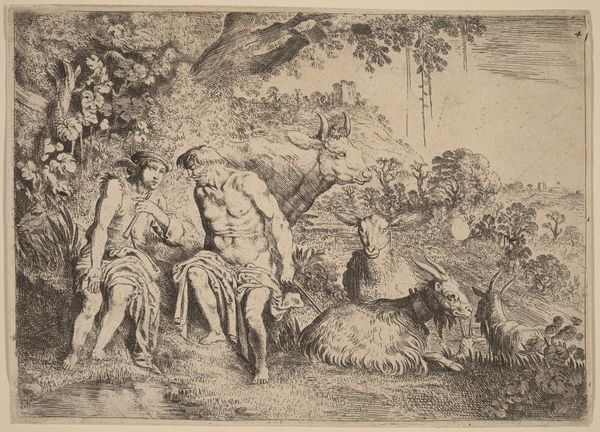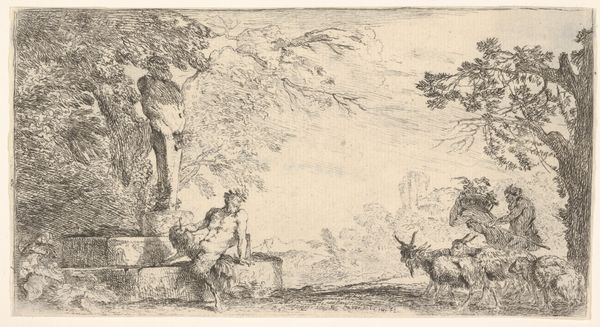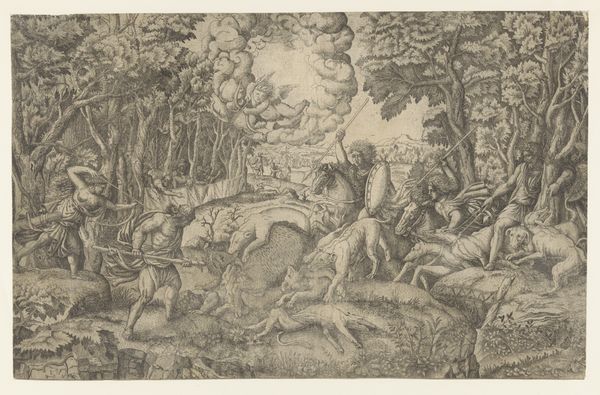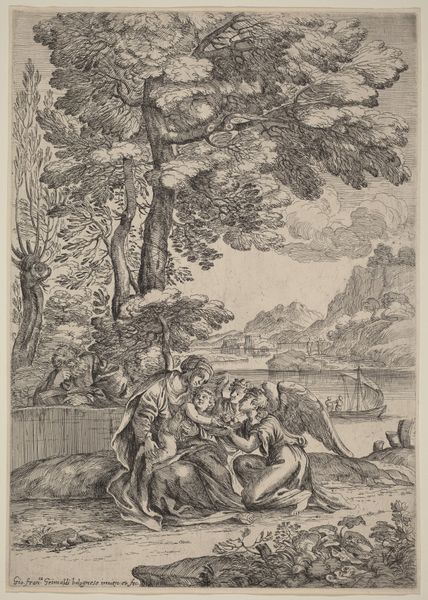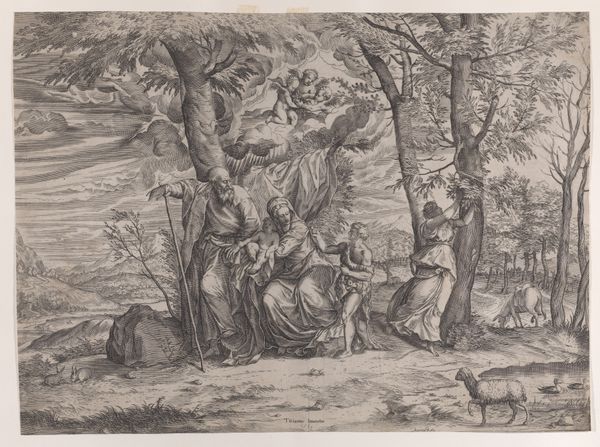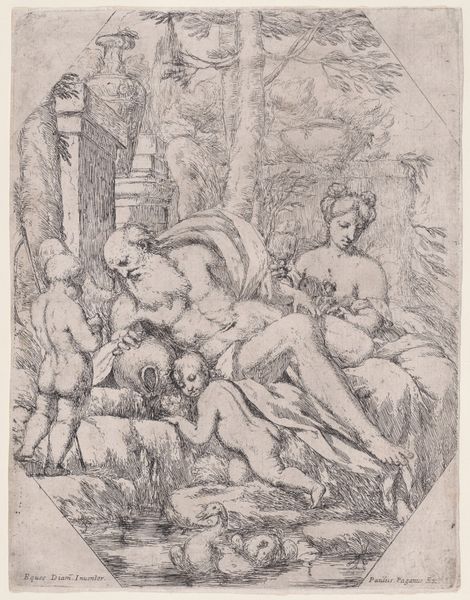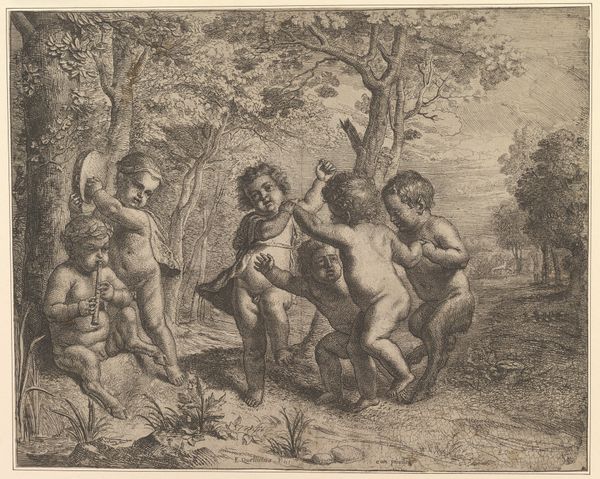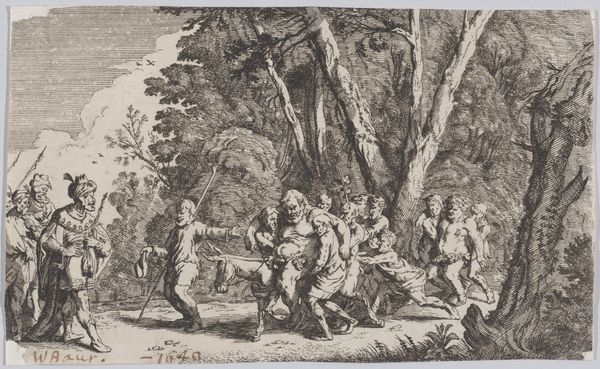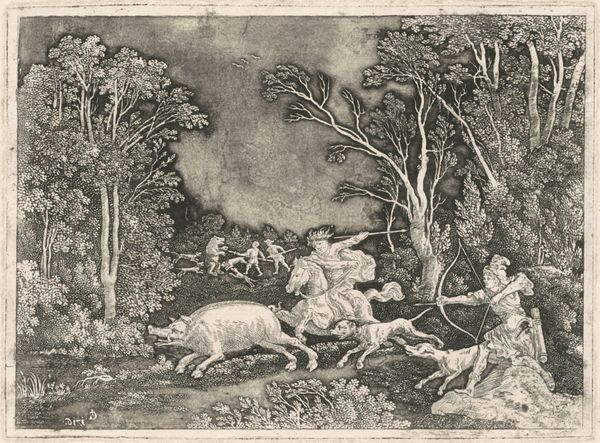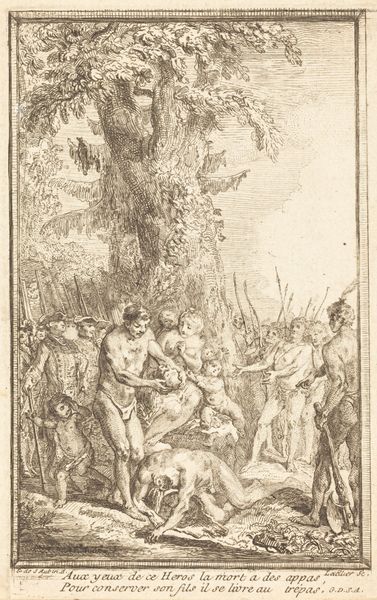
drawing, print, etching, engraving
#
drawing
#
baroque
#
ink painting
# print
#
etching
#
landscape
#
figuration
#
engraving
Dimensions: 125 mm (height) x 182 mm (width) (bladmaal)
Curator: This drawing, crafted between 1618 and 1622 by Moyses van Wtenbrouck, is titled "Argus beder Merkur om at blive hos ham." It uses etching, engraving and print. Editor: Immediately, I notice the almost melancholic mood. The landscape seems overgrown, blurring into a kind of wildness, despite the classically rendered figures. Curator: Yes, Wtenbrouck uses landscape elements from the baroque style. Note the symbolism here; Mercury, messenger of the gods, his winged helmet only just visible, attempts to soothe Argus, the hundred-eyed giant tasked with guarding Io. Argus, covered with eyes even as he is lulled to sleep by Hermes playing music in this illustration of trust, represents an awareness of surveillance. Editor: It makes you think about who holds power and under what guises it operates, even in mythological narratives. The story is a clear representation of power imbalances—the powerful god manipulating the mortal giant, who has become complicit. We should ask whether that tension has a meaning for viewers who consider the ethics of looking and how systems of viewing have constructed social ideas about one's position in an intersectional, heterogeneous social landscape. The seemingly bucolic setting becomes a stage for manipulation. Curator: The dog watches in attendance—as do several sheep, echoing Argus's silent but eternal gaze. One figure literally never sleeps in this illustration. Argus and his permanent, panoptical attentiveness evokes ideas about protection or, perhaps, a more sinister view about who deserves watching—particularly of individuals considered liminal due to sex, class, age or physical capacity. How are we encouraged to feel about the surveilled, not just the surveillors? Editor: Precisely. The composition is key. Wtenbrouck, drawing from his Baroque background, situates Argus higher, creating the illusion that the scene unfolds before his watchful gaze and us. I cannot unsee Argus, forced to trust a charming, able Mercury, a person perceived by the court and likely the artist as respectable based on appearance alone, despite a mission of deception and control. The trust we place in charm continues as a social problem—privileging those considered “respectable”, or worthy of inclusion based on inherited, biased perceptions. It's unnerving. Curator: Definitely. What started out seeming a tranquil scene rapidly dissolves into something far more disturbing on a grand social and symbolic scale. Editor: It reminds us how the visual arts play a role in legitimizing the stories societies wish to uphold—stories worth examining as a visual vocabulary of power dynamics that are still shaping lives and attitudes.
Comments
No comments
Be the first to comment and join the conversation on the ultimate creative platform.
